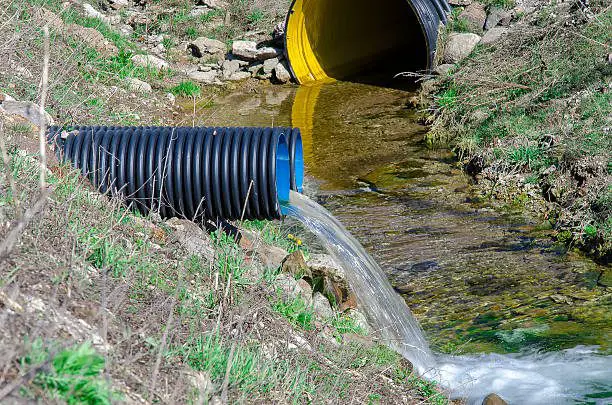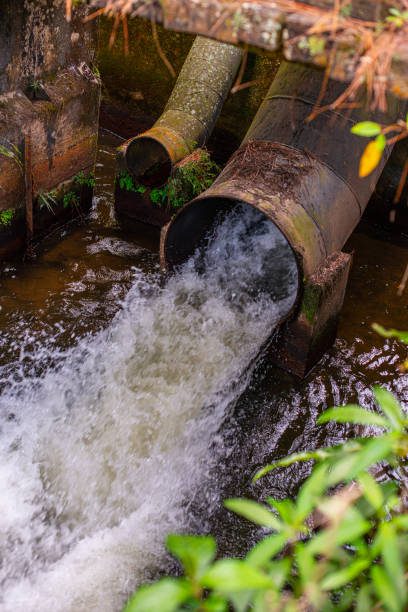Grey water refers to the relatively clean water that comes from household activities such as washing dishes, clothes, and bathing. Grey water is different from black water, which comes from toilets and contains human waste.
Grey water typically contains fewer contaminants than black water, but it may still contain traces of soap, grease, hair, and other organic matter. While grey water may not be suitable for drinking or cooking, it can be safely reused for other purposes, such as watering plants, flushing toilets, or washing cars.
Grey water systems can be installed in homes and buildings to collect, filter, and reuse grey water for non-potable purposes. These systems can help conserve water and reduce the strain on municipal water treatment facilities. However, it’s important to use proper filtration and disinfection methods to prevent the spread of disease and contamination.
The Products Derived From Grey Water

Grey water is wastewater that comes from sources other than toilets, such as showers, sinks, and washing machines. It can contain pollutants and pathogens, but with proper treatment, it can be reused for non-potable purposes. Here are some examples of products derived from grey water:
(1) Irrigation water
One of the most common uses of greywater is for irrigation of non-edible plants. Grey water can be used to water lawns, gardens, and trees, which can significantly reduce the amount of fresh water needed for these purposes.
Greywater is the wastewater generated from sources such as sinks, showers, baths, and washing machines. This water can be reused for non-potable purposes, such as irrigation, toilet flushing, and washing clothes.
Using greywater for irrigation can be a cost-effective and environmentally friendly way to water plants and lawns. However, there are some important considerations to keep in mind:
Quality of the greywater: The quality of the greywater must be suitable for irrigation purposes. Greywater from washing machines may contain chemicals and detergents that can harm plants, while greywater from toilets or kitchen sinks may contain high levels of bacteria and pathogens that can pose health risks.
Treatment: Greywater should be treated before being used for irrigation to remove any harmful contaminants. This can be done through physical, biological, or chemical treatment methods.
Soil type: The type of soil in your garden or lawn can affect the suitability of using greywater for irrigation. Clay soils can become waterlogged and reduce the effectiveness of irrigation, while sandy soils may require more frequent watering.
Plant selection: Some plants are more tolerant of greywater irrigation than others. Plants that are highly sensitive to salts or chemicals may not be suitable for greywater irrigation.
Local regulations: Check local regulations before using greywater for irrigation to ensure compliance with any requirements or restrictions.
Using greywater for irrigation can be a sustainable and cost-effective way to water plants and lawns, but it is important to carefully consider the quality of the greywater, treatment methods, soil type, plant selection, and local regulations.
Read Also: Importance of Water and Its Unique Properties
(2) Toilet flushing
Grey water can also be used for toilet flushing, which can save a significant amount of water. Grey water is not recommended for use in toilets that are connected to a septic system or a public sewer system.
Toilet flushing with grey water is a practice that involves using wastewater from sources other than toilets, such as sinks, showers, and washing machines, to flush toilets. This is done as a means of conserving fresh water, as the water used for flushing toilets typically accounts for a significant portion of a household’s water usage.
There are a few considerations to keep in mind when implementing a grey water system for toilet flushing. Firstly, the grey water must be properly treated and filtered to remove any contaminants or particles that could clog or damage the toilet or plumbing system. This can be done through various filtration and disinfection methods, such as using sand or gravel filters and adding chlorine or other disinfectants.
Additionally, it is important to ensure that the grey water system is properly installed and meets all relevant building codes and regulations. This may involve obtaining permits and working with a licensed plumber or contractor.
Finally, it is important to consider the potential health risks associated with using grey water for toilet flushing. While properly treated grey water is generally considered safe for non-potable uses such as toilet flushing, there is still a risk of exposure to harmful bacteria or pathogens. It is important to follow proper safety and hygiene practices, such as washing hands thoroughly after handling grey water or using the toilet.
(3) Cleaning
Grey water can be used for cleaning outdoor surfaces, such as sidewalks and driveways, as well as indoor surfaces, such as floors and toilets. Greywater is wastewater generated from domestic activities such as washing dishes, clothes, and bathing. Instead of disposing of it as sewage, greywater can be treated and reused for non-potable purposes such as irrigation, flushing toilets, and cleaning.
Cleaning with greywater can be an effective way to reduce water consumption and conserve resources. However, it is important to note that greywater can contain pathogens and chemicals that may pose health risks if not properly treated or handled. Therefore, it is essential to follow certain guidelines when using greywater for cleaning:
Use only biodegradable and eco-friendly cleaning products that are safe for plants and animals. Avoid using greywater for cleaning kitchen surfaces, dishes, or utensils as these may contain harmful bacteria that could cause foodborne illness.
Do not use greywater for cleaning wounds, cuts, or any open sores as it may increase the risk of infection. Use greywater only for cleaning floors, walls, and outdoor areas where there is no risk of human contact.
Always wear gloves and protective clothing when using greywater for cleaning. Store greywater in covered containers away from children and pets to prevent accidental ingestion. Ensure that the greywater is treated or filtered before use to remove any harmful pathogens or chemicals. Finally, it is important to check with local regulations and guidelines regarding the use of greywater for cleaning and other purposes.
Read Also: Ways To Generate Income From Gaseous Waste
(4) Cooling
Grey water can be used for cooling purposes, such as in air conditioning systems or in industrial processes that require water for cooling. Greywater refers to wastewater generated from activities such as washing dishes, clothes, or taking a shower, that can be reused for non-potable purposes such as toilet flushing or landscape irrigation. Greywater can also be used for cooling purposes through a process known as greywater cooling.
Greywater cooling involves using greywater to cool a building or its surrounding area by using the relatively cool temperature of the water to absorb heat from the air or surfaces.
This can be done through a closed-loop system where greywater is circulated through a heat exchanger to cool a separate fluid, such as chilled water, that is then used to cool the building.
Alternatively, greywater can be used directly to cool surfaces such as roofs or walls through a process known as evaporative cooling, where the water is sprayed onto the surface and evaporates, removing heat from the surface and the surrounding air.
Greywater cooling can be an effective way to reduce energy consumption and save water by using wastewater that would otherwise be discarded. However, it requires proper treatment and filtration to ensure that the water is safe to use for cooling purposes and does not introduce contaminants into the building or surrounding environment.
Additionally, greywater cooling may not be suitable for all buildings or climates, as it relies on the availability of cool water and can be less effective in areas with high humidity.
(5) Energy production
Grey water can be used as a source of energy through the process of anaerobic digestion. This process involves breaking down organic matter in the grey water to produce methane, which can be used as a fuel for heating or electricity generation.
Greywater is wastewater generated from activities like washing dishes, laundry, and bathing, which can be recycled and reused for non-potable purposes like toilet flushing and irrigation.
While greywater can’t be used for drinking or cooking, it can still be a valuable resource for reducing water usage and conserving energy. There are several ways to produce energy from greywater, including:
Anaerobic digestion: Anaerobic digestion is a process where microorganisms break down organic matter in the absence of oxygen, producing biogas as a byproduct. Greywater contains organic matter that can be converted into biogas through anaerobic digestion. Biogas can be used as a renewable source of energy for heating or electricity generation.
Microbial fuel cells: Microbial fuel cells (MFCs) use bacteria to convert organic matter in greywater into electricity. MFCs contain two electrodes separated by a membrane, and as bacteria consume organic matter, they produce electrons that flow through the membrane and generate electricity.
Heat recovery: Greywater contains heat energy that can be recovered and reused. Heat exchangers can be used to extract heat from greywater and transfer it to a separate water system for heating purposes.
Hydroelectric power: Greywater can be used to generate hydroelectric power by creating a flow of water through a turbine. This can be achieved by collecting greywater in a tank and then releasing it through a turbine, producing electricity.
Energy production from greywater is still in its early stages of development, and the technology is not yet widely available. However, with increasing concerns about water scarcity and the need for sustainable energy sources, greywater reuse and energy production may become more common in the future.
It’s important to note that grey water should always be treated and filtered before being reused, and the reuse of grey water should comply with local regulations and guidelines to ensure public health and safety.
Read Also: Benefits of Using a Fitness Planner for Mental Health

